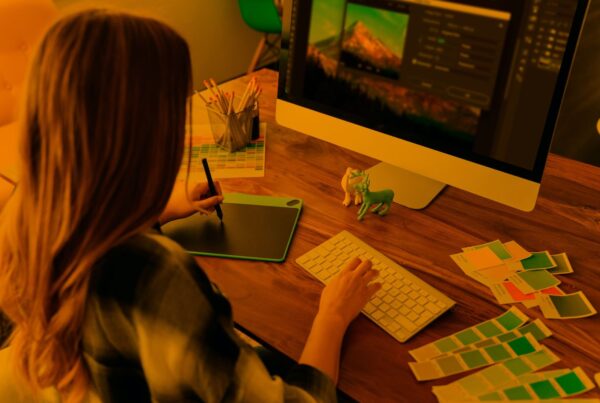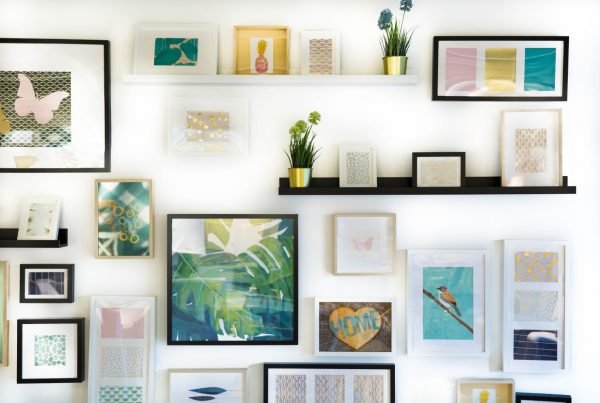Photo by Eric Park on Unsplash
Art has been at the centre of human civilisation since the dawn of time. From the ancient cave paintings to the contemporary digital art, it has continually been a medium through which people express emotions, beliefs, and creativity.
This transformative power of art goes beyond just aesthetics; it serves as a catalyst for inspiration, a tool for social change, and a window into the human soul.
In this journey, we will explore galleries that house these masterpieces, delve into historical pieces, and investigate the modern-day interpretations of art.
Table of Contents
Galleries: A Sanctum Of Creativity And Culture
Galleries play an indispensable role in exhibiting the genius of artists. These spaces not only exhibit artworks but also imbue visitors with the cultural, historical, and social contexts that the art pieces carry.
Stepping into a gallery is akin to stepping into a microcosm of human expression and innovation.
Paul Robeson Galleries: A Melting Pot Of Diversity
Located in Newark, New Jersey, the Paul Robeson Galleries were established in 1979. Named after Paul Robeson, a prominent African-American singer, actor, and Civil Rights Movement activist, these galleries have become a symbol of diversity and activism through art.
They celebrate underrepresented voices and foster an environment of inclusiveness and discourse. The multifarious collection includes paintings, sculptures, and photographs that transcend aesthetic values and delve into pressing social issues.
For individuals seeking inspiration, the Paul Robeson Galleries offer a plethora of art pieces that will instigate introspection, empathy, and a zeal for change.
The Louvre: Preserving The Historical Genius
The Louvre, located in Paris, is the world’s largest art museum and a historical monument.
It is a treasure trove of human history and artistic genius. Housing over 35,000 artworks from various civilisations, it provides visitors with a comprehensive insight into the evolution of art and its role in shaping society.
Notable artworks such as the Mona Lisa and the Venus de Milo symbolise the pinnacle of human creativity and inspire countless individuals.
By understanding the historical context and the intricate details of the artworks, one can glean lessons on innovation, persistence, and the indomitable human spirit.
White Cube: Championing Contemporary Art
In contrast to the historical essence of the Louvre, the White Cube galleries in London epitomise the modern art movement.
With a focus on contemporary art, White Cube has been instrumental in defining and promoting the careers of many artists.
Here, visitors can experience the cutting edge of artistic expression, which often challenges traditional norms and perceptions.
This gallery serves as an inspiration for breaking barriers and embracing originality and contemporary issues through the lens of art.
Historical Art Pieces: Windows Into The Past
Artworks that have withstood the test of time often carry with them the soul of the era they were created in.
These historical art pieces not only showcase the technical prowess of the artists but also reflect the society, culture, and emotions of the time.
The Starry Night By Vincent Van Gogh
One of the most recognised paintings in the history of Western art, The Starry Night by Vincent van Gogh, encapsulates the artist’s emotional turmoil and his love for the night sky.
Painted in 1889, this masterpiece, with its swirling hues and haunting ambiance, invites viewers to explore the human psyche.
It inspires many to communicate emotions and experiences through vibrant colours and vigorous brushwork.
The Persistence Of Memory By Salvador Dali
Salvador Dali’s The Persistence of Memory is a hallmark of the Surrealist movement. Created in 1931, it is renowned for the melting clocks amidst a barren landscape.
This painting explores the fluidity and relativity of time, challenging viewers to question their perceptions of reality.
It serves as a reminder of the boundlessness of human imagination and the importance of questioning the status quo.
The Creation Of Adam By Michelangelo
Michelangelo’s The Creation of Adam is not only a religious icon but also a testament to the Renaissance era’s revival of arts and sciences.
Painted on the ceiling of the Sistine Chapel, this fresco showcases the moment God gives life to Adam.
The precision and elegance of Michelangelo’s work have inspired countless artists and thinkers to pursue perfection and to explore the deep-rooted connection between humanity and a higher power.
Modern Interpretations: The Evolution Of Artistic Expression
In the modern era, art has taken numerous new forms, and the definition of art has expanded. Contemporary artists are not only using traditional mediums but are also integrating technology and various art forms to communicate messages.
Street Art: Reclaiming Public Spaces
Street art has emerged as a powerful medium to reclaim public spaces and bring art to the masses.
Artists like Banksy have used this form to make strong political statements and to critique societal norms.
Street art often revitalises neighbourhoods and becomes an integral part of the community’s identity, encouraging individuals to engage with their surroundings actively.
Digital Art: Merging Technology With Creativity
With the advent of technology, artists now employ digital tools to create artworks. Digital art ranges from illustrations to animations and virtual reality installations.
This form allows for a new level of creativity and accessibility. Artists such as Beeple have achieved global recognition, inspiring countless individuals to explore the unlimited potential that technology brings to artistic expression.
Art Installations: Immersive Experiences
Art installations, often large-scale and site-specific, engage the audience by creating immersive environments. Artists like Yayoi Kusama, known for her Infinity Mirrored Rooms, engage viewers physically and psychologically.
These installations not only serve as a source of aesthetic pleasure but also challenge the viewers’ perceptions and evoke emotions, pushing the boundaries of what art can achieve.
Key Takeaway
The transformative power of art is an enduring and ever-evolving force in human society.
From the hallowed halls of galleries to the rebellious sprays of street art, art in its myriad forms continues to inspire, challenge, and reflect the depths of human creativity and emotion.
As we traverse through galleries, engage with historical masterpieces, and immerse ourselves in modern interpretations of art, we uncover the layers of human expression and ingenuity.
Art, in its inexhaustible diversity, offers a kaleidoscope through which we can view and comprehend the world. It has the power to instigate change, nurture the soul, and foster a profound connection with our heritage and environment.
May we continue to seek inspiration in the tapestry of art that surrounds us, and in doing so, enrich not only our own lives but the fabric of the societies in which we dwell.








